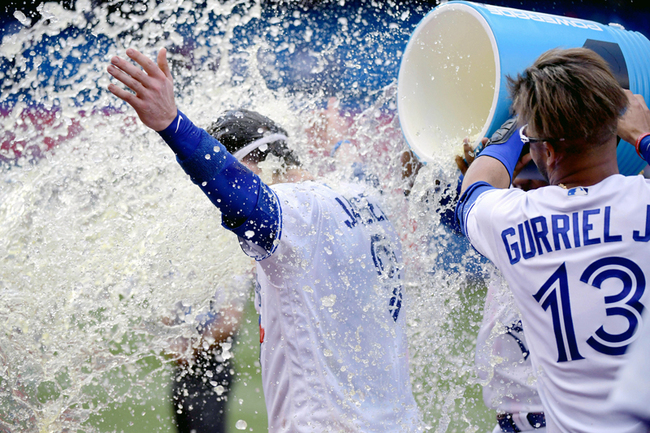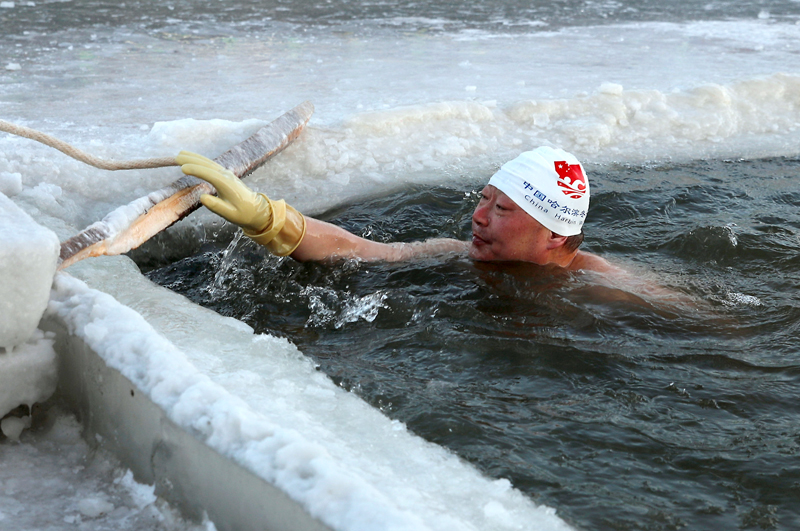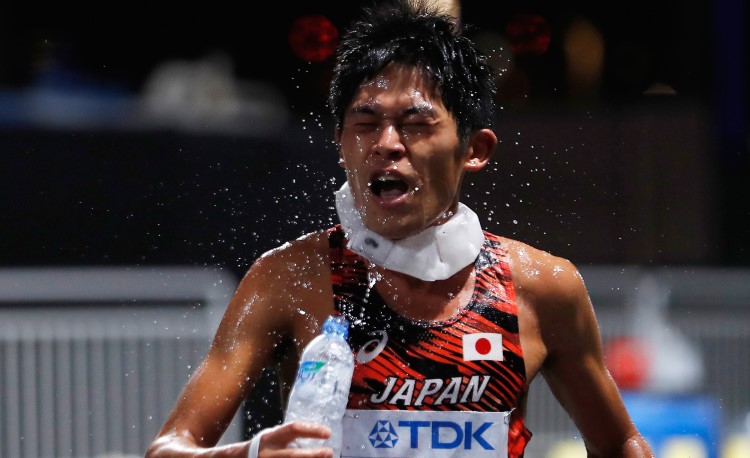You are viewing 1 of your 1 free articles. For unlimited access take a risk-free trial
Post-exercise recovery: time for a hands-on approach!
SPB looks at new research on post-exercise recovery, and how hand cooling could help
Rapid recovery is a fundamental pre-requisite for success in high-level sport. In short, the faster you recover, the sooner you’ll be fresh and ready to perform quality training again. This in turn means you can perform more high-quality training sessions within a given time period, thereby greater training adaptations. This need for rapid recovery is particularly relevant when athletes needed to train more than once daily. It’s also essential when athletes compete in multi-round events during a single day – eg heats/rounds in an athletic or swimming competition.
The essentials of recovery
The speed and completeness of post-exercise recovery involves a number of factors, which include:
· The athlete’s nutrition immediately after and in the hours following the exercise bout (absolutely critical – see this article for a more in-depth discussion).
· How hard/long the bout of exercise was.
· The amount of post-exercise rest taken by the athlete.
· The athlete’s individual characteristics – eg age (older athletes need more time to recover), previous training history (well-trained muscles can recover faster) and genetic makeup.
Of these factors, the most easily modifiable are post-exercise nutrition and rest activity. But while ample rest and optimum nutrition are incredibly powerful tools for ensuring rapid and full recovery, they are by no means the only tools in the box. It turns out that there are a number of other post-exercise therapeutic strategies that can enhance and speed up recovery. These include massage and foam rolling, stretching, and small amounts of low-intensity targeted exercise, more commonly known as ‘active recovery’.
Cooling for recovery
Another recovery tool in the box – and one that has become increasingly popular – is the use of post-exercise cooling techniques to encourage beneficial physiological changes in the muscles. Of these methods, cold water immersion (CWI - which involves the athlete immersing themselves for a period of time in cold water (typically around 10-13C [50-55F]) right after training or competition) is probably the most popular and best researched.
The theory behind CWI after exercise is that it decreases the body’s core temperature to below its baseline level, with a peak drop in core temperature occurring around an hour following immersion. This cooling effect has been shown to help repair exercise-induced muscle damage, with a larger effect for weight-bearing (running and strength training) compared with non-weight-bearing activities(1,2).
There are a number of variations of cooling strategies other than CWI. These include contrast water therapy (cool water immersion interspersed with short periods of warm water immersion), very low temperature cold-air cryotherapy, wind cooling or using specialized cooling garments worn on the body to rapidly lower post-exercise temperatures. However, a very recently published meta-study bringing together all the previous data on these cooling/recovery methods found that when it came to recovering from muscle soreness, CWI was superior to all the other recovery methods(3). And for the recovery of muscular power and flexibility following a bout of strenuous exercise, CWI was similar to cryotherapy and more effective than active recovery, contrast water therapy and warm-water immersion.
The problem with CWI
If cold water immersion is such an effective recovery tool, why isn’t it used all the time and by all athletes? The answer is simple – convenience, or rather lack of it. The fact is that jumping into a bath of cold water right after training or competition simply isn’t feasible or practical for most athletes! Firstly, you have to have access to a bathtub and water, and secondly, you may well need to cool this water in summer as it could be significantly warmer than 13C (55F) when it emerges from the tap. Then of course, there’s the inconvenience and time taken, and the fact that when you’re away from home, it’s not even possible. Finally, while effective, the mere thought of plunging into a bath of pretty cold water is distinctly unappealing to many!
There are other cooling options, which have been shown to be quite effective in promoting recovery such as the use of a large wind fan directed on the chest combined with intermittent water spraying to promote evaporative cooling(4). However, this leads to similar problems regarding practical application – how do you carry a large wind fan to an event and plug it into a mains electricity source immediately after an event?
Hands on approach
There could be another cooling strategy however thanks to a phenomenon known related to regions in the body with a characteristic known as ‘arteriovenous anastomosis’. Arteriovenous anastomosis is where small arteries and veins are directly connected in a region with a relatively large area for blood flow. A larger blood flow area enables rapid blood circulation, while the connected reticular veins existing in the dermis (surface) layer are able to rapidly transfer heat into the skin where it can be lost to the environment (ie cooling takes place)(5).
Arteriovenous anastomosis is commonly observed in the extremities of the body and in the ears. However, of special interest to athletes is that the hands are particularly capable in this respect. Hands are capable of losing a large amount of heat relative to their size, which is why some researchers have asked whether hand cooling could be a more practical substitute for whole body immersion. Some studies have been carried out on hand cooling combined with other strategies such as hydration, but there’s almost no research on hand cooling in the context of exercise and recovery alone(6).
New research
To investigate whether hand cooling could be effective for recovery as a standalone strategy, a new study has been carried out by a team of Korean scientists(7). Published in the journal ‘Technology and Health Care’, this study looked at hand cooling on functional recovery and subsequent exercise ability by comparing post exercise recovery using either hand cooling or passive rest without cooling following an initial exercise session.
Thirty recreationally active participants were randomized into either hand cooling and or normal recovery groups. Both groups had to them complete two exercise tasks at an ambient room temperature of 20C (68F) using the following protocol:
1. A high-intensity walking exercise during both sessions at a 15% incline and a speed of 4km/h on a treadmill for 30 minutes in order to induce muscle fatigue.
2. Recovery period of 20 minutes where the participants either rested without cooling (control group) or using specially designed hand cooling gloves containing a gel that was maintained at 20C (ie 16+ C cooler than body temperature).
3. Another uphill walking task on the treadmill but this time to exhaustion. The initial exercise load was used at 10% inclination, 1.7 mph, for three minutes. It was then increased by steadily increasing the incline in increments of 2% and the velocity by 0.8–0.9 mph every three minutes until the participant could no longer continue.
As well as the trial to exhaustion, pre-exercise and post exercise (following cooling or normal rest) measures were taken. These included blood lactate levels, muscle strength and endurance, body temperatures, heart rates and oxygen uptake capacity (determined in step 3 above). The results from the two groups were then compared.
What they found
The results were striking. Compared to the non-cooling group who simply rested for 20 minutes, the hand-cooling group experienced significant physiological benefits; blood lactate concentration and body temperature significantly decreased, and while cardiopulmonary function, muscle strength, and muscular endurance all significantly recovered compared to the control group (see figures 1-3)(7). In short, the researchers concluded that using this hand- cooling technique after exercise could attenuate core temperature rises and improve performance during subsequent bouts of exercise following an initial bout.
Figure 1 (top): Changes in blood lactate concentration with and without hand cooling; Figure 2 (below): Changes in muscle strength with and without hand cooling
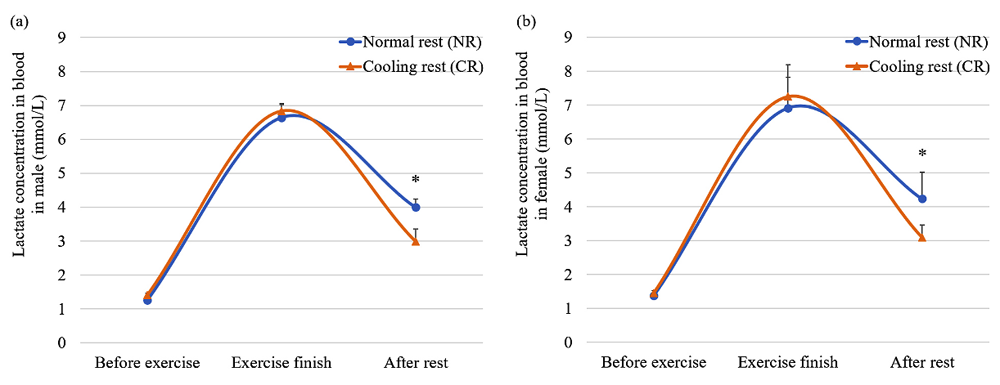

Figure 3: Changes in maximum oxygen uptake with and without hand cooling
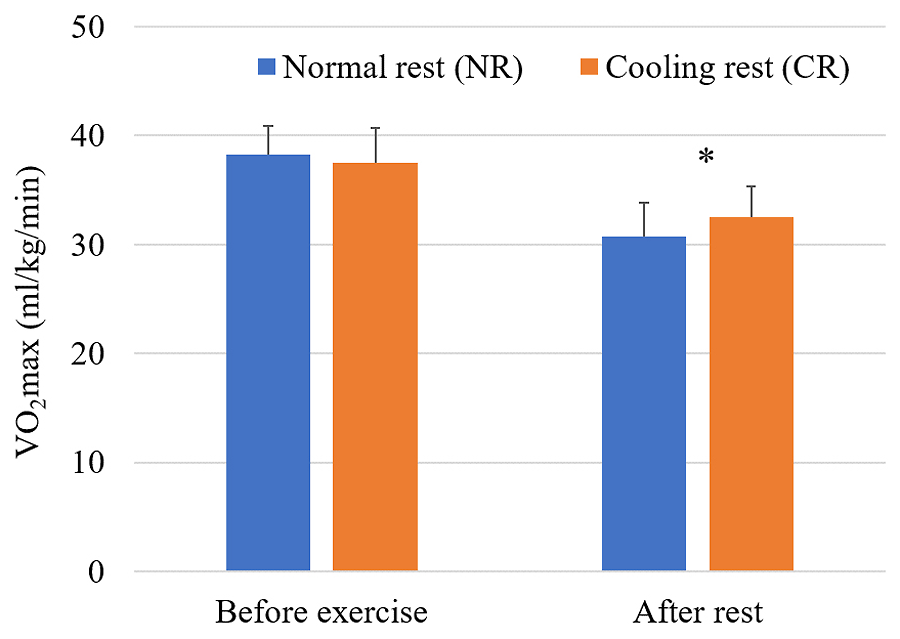
Practical implications for athletes
This is only one study using fairly modest numbers of participants, which means that some caution is required when interpreting the results. However, given that using 20 minutes of hand cooling produced a very significant gain in so many key indices of recovery – not least core temperature - we can be fairly confident that using hand cooling as a cooling and recovery strategy following a bout of exercise is indeed effective.
That’s great news because hand cooling can be performed fairly easily in many locations. In the study above, the participants wore cooled gel gloves maintained at exactly 20C so that any cooling variations were eliminated between trials (to reduce any possible statistical error). In real life in the field however, such gloves would not be needed; simply plunging your hands into a bowl or jug of cold water with a temperature below 20C would suffice!
Given that this kind of cooling strategy is quick, cheap and easy, with no downsides, it’s hard not to recommend it, especially for athletes who need to recover quickly in order to complete a second exercise task shortly after an initial task. If you want to try this recovery strategy for yourself, here are some practical tips:
· Perform hand cooling for 20 minutes (as per the study).
· Choose a large bowl so that you can completely submerge your hands (to achieve maximum cooling effect).
· In summer when your tap water is warmer, run the tap for a minute or two before filling the bowl to ensure the water is cold (below 20C).
· As your hands are cooled, the water in the bowl will gradually warm. Therefore, the water in the bowl may need refreshing/topping up every few minutes to ensure it remains cool.
· There’s no hard and fast data on this aspect of hand cooling, but it’s logical and likely that a cooler water temperature will help promote a more rapid fall in body temperature. An option therefore is to lower the temperature of the tap water further - eg by adding ice.
· Don’t use water below 8C (46F) for cooling; water colder than this is known to induce quite a lot of thermal discomfort in the hands(8).
References
1. Sports Med. 2016 Aug; 46(8):1095-109
2. Int J Sports Physiol Perform. 2011 Jun; 6(2):147-59
3. Sports Med. 2023 Mar;53(3):687-705
4. Exp Physio. (2009) ; 94: (6): 695-703
5. Temperature. (2016) ; 3: (1): 92-103
6. J Sci Med Sport. (2016) ; 19: (11): 936-940
7. Technology and Health Care, vol. 31, no. S1, pp. 259-269, 2023
8. Temperature (Austin). 2015 Jan-Mar; 2(1): 105–120
Newsletter Sign Up
Testimonials
Dr. Alexandra Fandetti-Robin, Back & Body Chiropractic
Elspeth Cowell MSCh DpodM SRCh HCPC reg
William Hunter, Nuffield Health
Newsletter Sign Up
Coaches Testimonials
Dr. Alexandra Fandetti-Robin, Back & Body Chiropractic
Elspeth Cowell MSCh DpodM SRCh HCPC reg
William Hunter, Nuffield Health
Keep up with latest sports science research and apply it to maximize performance
Today you have the chance to join a group of athletes, and sports coaches/trainers who all have something special in common...
They use the latest research to improve performance for themselves and their clients - both athletes and sports teams - with help from global specialists in the fields of sports science, sports medicine and sports psychology.
They do this by reading Sports Performance Bulletin, an easy-to-digest but serious-minded journal dedicated to high performance sports. SPB offers a wealth of information and insight into the latest research, in an easily-accessible and understood format, along with a wealth of practical recommendations.
*includes 3 coaching manuals
Get Inspired
All the latest techniques and approaches
Sports Performance Bulletin helps dedicated endurance athletes improve their performance. Sense-checking the latest sports science research, and sourcing evidence and case studies to support findings, Sports Performance Bulletin turns proven insights into easily digestible practical advice. Supporting athletes, coaches and professionals who wish to ensure their guidance and programmes are kept right up to date and based on credible science.






